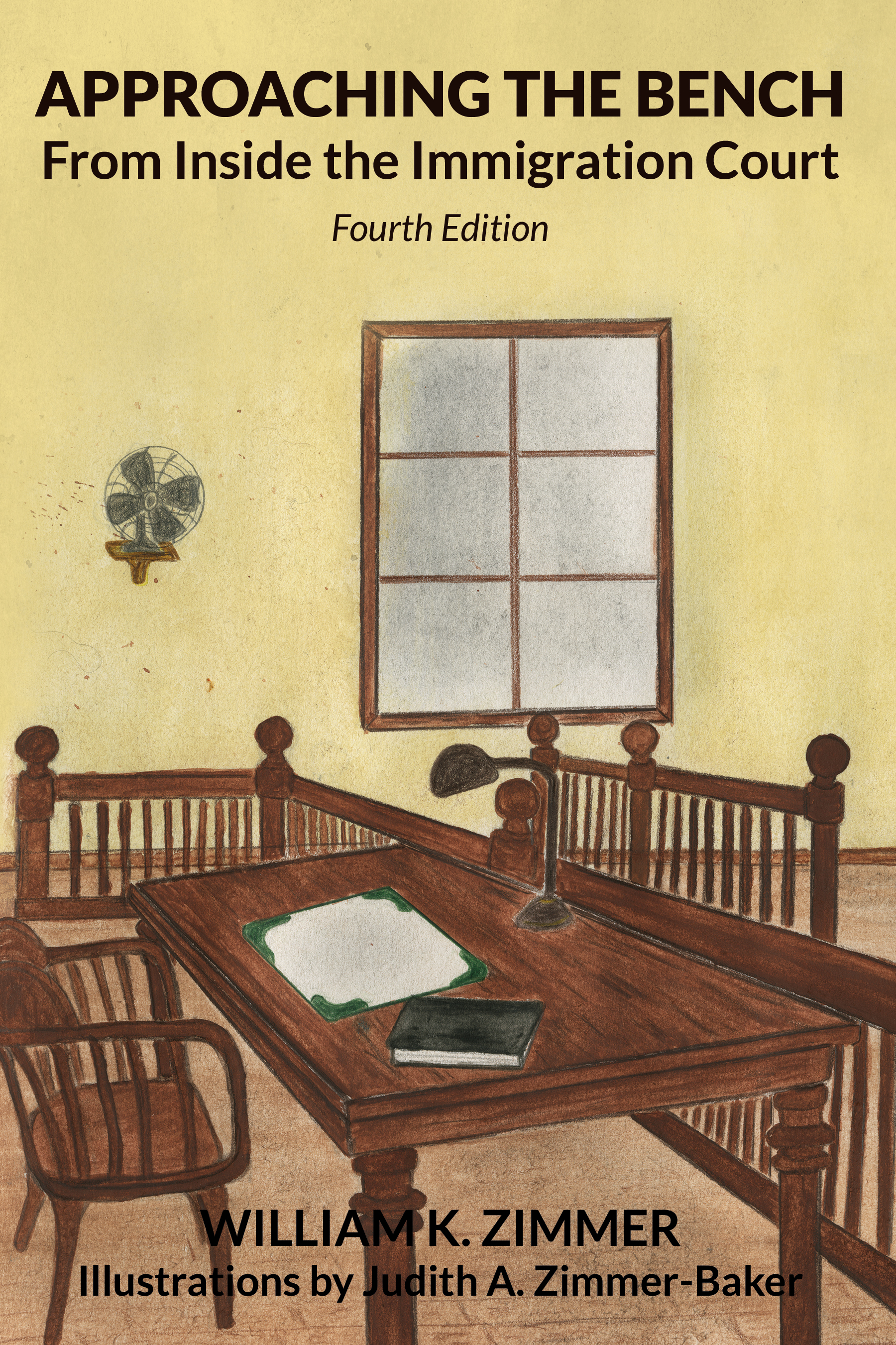Adverse Credibility Finding Must be Based on Record Evidence

The procedural history, facts of record, holding and rationale in Nkenglefac v. Garland, (May 18, 2022) No. 19-60647) are as follows:
Case History
An Immigration Judge denied the Petitioner’s applications for relief from removal and ordered him removed.
The Board of Immigration Appeals (“BIA”) affirmed the Immigration Judge’s determination.
The Petitioner filed a petition for review of the BIA’s decision.
The Petitioner was removed during the pendency of his petition for review subsequent to denial of a motion for stay of removal.
Facts
The Petitioner is a native and citizen of Cameroon, who applied for admission into the United States on May 9, 2018.
Upon determining that the Petitioner was not credible, the Immigration Judge, Agnelis Reese, denied the Petitioner’s applications for asylum, withholding of removal, and relief under the Convention Against Torture (“CAT”) and ordered him removed to Cameroon.
The BIA subsequently affirmed the Immigration Judge’s adverse credibility determination and dismissed his appeal.
The Petitioner was subsequently removed to Cameroon.
The Petitioner filed a petition for review challenging the Immigration Judge’s reliance on his United States Customs and Border Protection (“CBP”) and asylum credible fear interviews that were not entered into the hearing record of the removal proceeding, nor raised in that hearing at all, to make an adverse credibility finding.
The Petitioner testified that, in January 2014, the Petitioner became a member of the Southern Cameroon National Council (“SCNC”), a Cameroonian political party. As a member of the party, the Petitioner organized and attended political meetings, protests, and rallies and attempted to recruit new party members. The SCNC’s goal was for the English-speaking southern part of Cameroon to secede from Cameroon.
The Petitioner admitted the government of Cameroon considers the SCNC to be a criminal organization. He then narrated a series of events including detentions and arrests and physical abuses by police in Cameroon.
The Petitioner also described attacks on his younger brother and his father by Cameroon military personnel, including an incident in which his father was shot and killed in a struggle during the seizure of a hunting rifle at his family’s home.
On November 20, 2018, about three months after the final removal hearing, the Immigration Judge issued an opinion that included a finding that the Petitioner was not credible.
The Immigration Judge identified several omissions and inconsistencies. In particular, the Immigration Judge noted that, the Petitioner’s declaration in support of his applications for relief from removal, indicated that the Petitioner had been arrested “several” times, but that the Petitioner had provided different answers in both his United States Customs and Border Protection (“CBP”) interview (one arrest during a strike in 2017) and his credible fear interview (two arrests). However, the government summaries of his interviews with CBP and asylum officers had never been introduced into evidence during removal proceedings.
Secondly, the Immigration Judge observed that during his credible fear interview, the Petitioner had stated that his family’s home was searched, and his father’s tools were seized, but the Petitioner did not mention that his father had been shot and killed during the incident.
Based on these alleged inconsistencies, the Immigration Judge denied the Petitioner’s asylum application based on lack of credibility.
During removal proceedings, the Immigration Judge refused to consider evidence submitted by the Petitioner because it had been submitted two days after the discovery deadline.
Alternatively, the Immigration Judge found that the Petitioner failed to provide sufficient corroborating evidence to support his claims of past persecution and a well-founded fear of future persecution on account of a protected ground.
The BIA upheld the Immigration Judge’s adverse credibility inference drawn from the Petitioner’s interviews with CBP and asylum officers, agreed with the Immigration Judge’s determination that the Petitioner failed to establish eligibility for asylum, withholding of removal, or relief under the CAT and dismissed his appeal.
The Petitioner filed a timely petition for review in this court, seeking a stay of removal, which was denied.
After denial of his request for a stay of removal, the Department of Homeland Security (“DHS”) removed the Petitioner to Cameroon.
Held
Petition for Review GRANTED
REMANDED
Rationale
In his petition for review, the Petitioner asserted that:
- The Immigration Judge committed error as a matter of law by drawing negative credibility inferences from summaries of his CBP and credible fear interviews because neither interview had been submitted into the record or referenced during his removal proceeding.
- He did not waive his objection to evidence not in the record of proceedings because he had no notice the Immigration Judge would rely on the summaries of his CBP and credible fear interviews prior to issuance of the final decision.
The Fifth Circuit Court of Appeal reasoned as follows:
Jurisdiction
- Although the Petitioner was removed from the United States during the pendency of his petition for review, his case is not moot.
- “An action is moot where (1) the controversy is no longer live or (2) the parties lack a personal stake in its outcome.” Rocky v. King, 900 F.2d 864, at 867 (5th Cir. 1990).
- “In cases challenging a BIA decision, the petitioner’s removal from the United States generally renders the petition moot unless the petitioner would suffer collateral legal consequences from the challenged decision.” Mendoza-Flores v. Rosen, 983 F.3d 845, at 847 (5th Cir. 2020).
- If the BIA’s decision is upheld, the Petitioner would “suffer an automatic ‘period of inadmissibility following removal.’” Arulnanthy v. Garland, 17 F.4th 586, at 592 (5th Cir. 2021).
- An automatic period of inadmissibility is a “concrete disadvantage” that is “imposed as a matter of law” and, as such, constitutes an adverse collateral consequence. See Alwan v. Ashcroft, 388 F.3d 507, at 511 (5th Cir. 2004).
- Therefore, as a consequence of a period of inadmissibility automatically imposed as a matter of law, the Petitioner’s removal does not render his case moot.
Denial of Relief From Removal
- Reliance on records of credible fear and asylum interviews generally is not improper and discrepancies among an applicant’s credible fear interview, other records, and testimony can be considered in deciding credibility. See Avelar-Oliva v. Barr, 954 F.3d 757, at 764-65, 767-69 (5th Cir. 2020) (affirming adverse credibility determination due to variances between credible fear interview and testimony); Singh v. Sessions, 880 F.3d 220, at 226 (5th Cir. 2018); Arulnanthy v. Garland, 17 F.4th 586, at 593-95 (5th Cir. 2021).
- However, under BIA precedent, “an adverse credibility determination should not be based on inconsistencies that take an alien by surprise.” Matter of Y-I-M-, 27 I. & N. Dec. 724, at 726 (BIA 2019).
- Furthermore, fifth circuit case law is clear that “an adverse credibility determination . . . ‘must be supported by specific and cogent reasons derived from the record.’” [emphasis added] Singh v. Sessions, 880 F.3d at 225 (quoting Wang v. Holder, 569 F.3d 531, at 537 (5th Cir. 2009)).
- Petitioners should be given the opportunity to explain any non-obvious discrepancies that may bear on their credibility. See Mpesse v. Garland, No. 20-61207, 2021 WL 4256177, at p.5 (5th Cir. Sept. 17, 2021) (unpublished) (per curiam) (“When determining if an inconsistency is obvious, the key question is whether it is reasonable to assume that the applicant was aware of it and had an opportunity to offer an explanation before the IJ relied on it.).”
- At no point during the hearing before the Immigration Judge was the Petitioner provided with the opportunity to explain any apparent inconsistencies or dispute the accuracy of the records in question, or cross examine the individuals who prepared the interview summaries, much less object to their introduction, or offer views on weight to be given to the evidence.
- Not until three months after the conclusion of removal proceedings during which no mention had been made to the alleged evidence of inconsistencies did the Immigration Judge determine that “inconsistencies and omissions . . . undermine critical parts of Respondent’s claim” and deny the Petitioner’s application based on an adverse credibility finding.
- Specifically, the BIA found, “[Nkenglefac’s] interviews with asylum officers and [border] patrol officers . . . were not introduced into the record.”
- Since “an adverse credibility determination . . . ‘must be supported by specific and cogent reasons derived from the record.’” [emphasis added] Singh v. Sessions, 880 F.3d at 225; see also Mwembie v. Gonzales, 443 F.3d 405, at 410 (5th Cir. 2006) (explaining that the court is not compelled to uphold credibility determinations that are “unsupported by the record”), the BIA erred by affirming the Immigration Judge’s decision.
Commentary
Some readers might recall that, in Daljinder Singh v. Garland, (5th Cir. July 12, 2021) No. 19-60937 (not to be confused with Singh v. Sessions, cited by the Fifth Circuit Court of Appeals above in Nkenglefac v. Garland, (May 18, 2022) No. 19-60647), the Petitioner had applied for asylum and protection under the Convention Against Torture, claiming that he feared persecution and torture in India. The presiding Immigration Judge had denied his application, finding the Petitioner not credible based on inter-proceeding similarities, and the Board of Immigration Appeals (“BIA”) had dismissed the Petitioner’s appeal.
Daljinder Singh v. Garland involved similarities between statements submitted by different applicants in different proceedings, rather than inconsistencies discovered in the record of one proceeding. Yes. Both inconsistencies and similarities can support an adverse credibility finding.
However, the Immigration Judge will need to follow procedural guidelines in order to rely on inter-proceeding similarities to make an adverse credibility finding. Specifically, the Immigration Judge must give the applicant meaningful notice of the similarities and a reasonable opportunity to explain them prior to making a credibility determination that must be based on the totality of the circumstances. Matter of R-K-K-, 26 I&N Dec. 658 (BIA 2015).
In Matter of R-K-K-, the respondent’s application contained similar language to describe events that were almost identical to those claimed by his brother (who had been granted asylum about four years earlier). In particular, the respondent’s asylum declaration contained the same spelling and grammatical errors and spacing irregularities as his brother’s statement. In addition, the brother had used plural pronouns in his statement to describe incidents experienced with his wife; and the respondent used the same plural pronouns in identical language to describe similar incidents he claimed to have experienced alone.
The Immigration Judge gave the respondent an opportunity to explain the similarities and granted a three month continuance for the respondent to obtain evidence, including evidence from the transcriber involved in the respondent’s asylum declaration.
Ultimately, in Matter of R-K-K-, the BIA upheld the Immigration Judge’s adverse credibility finding and denial of his asylum claim and dismissed the respondent’s appeal.
The Fifth Circuit Court of Appeal relied on Matter of R-K-K- to grant a petition for review in Daljinder Singh v. Garland where:
- the Immigration Judge did not identify a substantial number of instances where the same or remarkably similar language is used to describe the same kind of incident or encounter which deprived the petitioner of the opportunity to meaningfully compare the language and narratives, produce evidence to explain the similarities, or draw attention to important distinctions; and,
- the Immigration Judge described several purported similarities that she did not raise at all during the petitioner’s asylum hearing which prevented the petitioner’s counsel from receiving notice of the similarities prior to the Immigration Judge’s decision.
See Daljinder Singh v. Merrick Garland, at pp. 7-11 (5th Cir. July 12, 2021) No. 19-60937.
Appellate court acknowledgement that intra-proceeding inconsistencies and inter-proceeding similarities will both support an adverse credibility finding might dishearten some immigration law practitioners.
However, for those who tend to see the glass as half full, it can be reassuring to observe that the Fifth Circuit Court of Appeal consistently insists that adverse credibility findings be based on specific and cogent reasons derived from the record, that respondents in removal proceedings be given a reasonable opportunity to explain and adduce evidence in opposition to an adverse credibility finding and that Immigration Judges must consider the totality of circumstances reflected by record evidence in making an adverse credibility finding.

